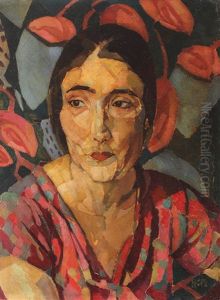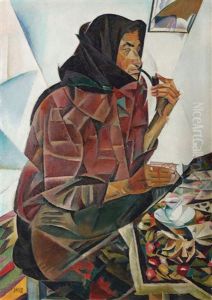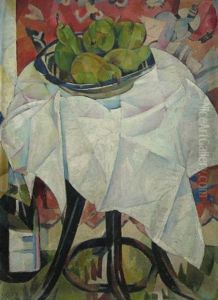Nadia Bulighin Grossman Paintings
Nadia Bulighin Grossman, born in 1932, was a Romanian-born artist whose work gained recognition primarily in the United States, where she eventually settled. Her journey through the art world was marked by a unique blend of cultural influences that shaped her distinct style, a testament to her diverse background and experiences. Grossman's early life in Romania, under the shadows of World War II and the subsequent rise of Communism, had a profound impact on her artistic vision, imbuing her works with a depth that spoke to themes of freedom, identity, and the human condition. After emigrating to the United States, Grossman continued to evolve her artistic practice, exploring various mediums and techniques. Her work, characterized by vibrant colors and dynamic compositions, often reflected her interest in the abstract expressionism movement that was prominent during her time. Despite facing the challenges of being an immigrant and a woman in the art world, Grossman managed to carve a niche for herself, exhibiting in various galleries and earning accolades for her contributions to contemporary art. Throughout her career, she remained committed to using her art as a means of commentary on societal issues, from the oppression she witnessed in her homeland to the cultural dynamics of her adopted country. Nadia Bulighin Grossman's legacy is one of resilience and innovation. Her artwork continues to inspire new generations of artists, serving as a bridge between the rich history of Eastern European art and the modernist trends of the West. Her death in 1998 marked the end of a prolific career, but her influence persists, a testament to the power of art to transcend borders and connect diverse narratives. Grossman's life and work exemplify the journey of an artist who, despite external adversities, remained true to her vision, contributing significantly to the tapestry of 20th-century art.







